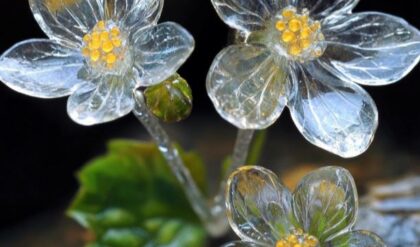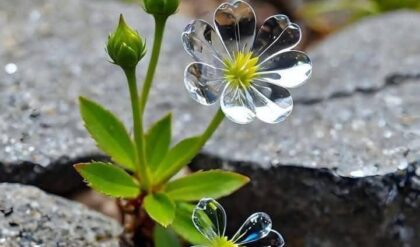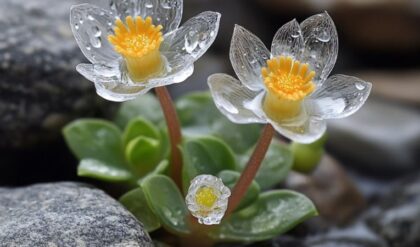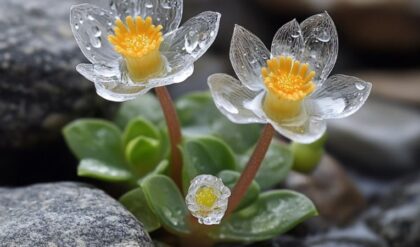The Enchanting “Calathea”: A Comprehensive Guide
Calathea plants, often referred to as prayer plants, command attention not just with their stunning foliage but also through the cultural narratives that accompany them. These tropical wonders, native to the lush undergrowth of South America, exhibit a living tapestry of colors and patterns, making them as visually captivating as they are ecologically significant. Imagine a room where these vivid greens and striking purples breathe life into grey walls; each leaf has a story to tell about its natural habitat of filtered light and humid air. Calatheas are more than mere ornamental plants; they are delicate ecosystems that require nuanced care, understanding their hydration needs and prefer nutrient-rich soil as though it were a nurturing embrace. The collective fascination with Calathea care extends beyond mere horticultural interest—it’s an exploration into the emotional connection we share with nature. By bringing these vivacious plants into our dwellings, we’re not just decorating our spaces; we are cultivating relationships with living entities, inviting tranquility and organic beauty into our everyday lives.
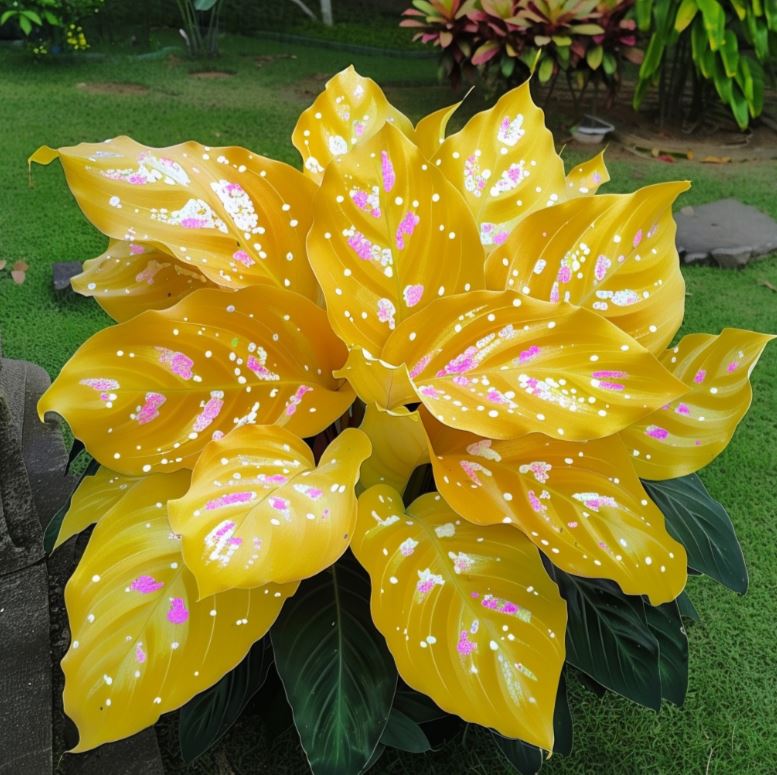
Understanding the Varieties of Calathea
Calathea encompasses a diverse range of varieties, each possessing unique traits that appeal to different tastes. Popular types include the majestic Calathea orbifolia, recognized for its broad leaves with striking silver stripes, and the enchanting Calathea medallion, which features intricate patterns reminiscent of an artist’s canvas. This diversity is akin to a curated art exhibit, where each plant draws visitors to engage with its distinct beauty and characteristics. Careful selection of varieties based on their specific needs can lead to an enriched environment that mirrors personal aesthetic preferences while encouraging biodiversity within one’s home.
The Majestic Calathea Orbifolia
The Calathea orbifolia is a true showstopper, with its broad, rounded leaves that display captivating silver-green stripes. These leaves unfold like a grand entrance, commanding attention and evoking a sense of regal elegance. Placed strategically in a room, the orbifolia’s striking foliage can instantly transform the ambiance, creating a focal point that draws the eye and ignites the imagination.
Beneath the surface, the orbifolia is a plant that thrives in humid, filtered light conditions, mirroring the sheltered understory of its native rainforest habitat. Its preference for consistent moisture in the soil and moist air around its leaves requires attentive care, but the rewards are well worth the effort. Watching the orbifolia’s leaves gently fold inwards at night, only to unfurl again in the morning, is a captivating display of the plant’s circadian rhythm, a reminder of the intricate dance between nature and the human experience.
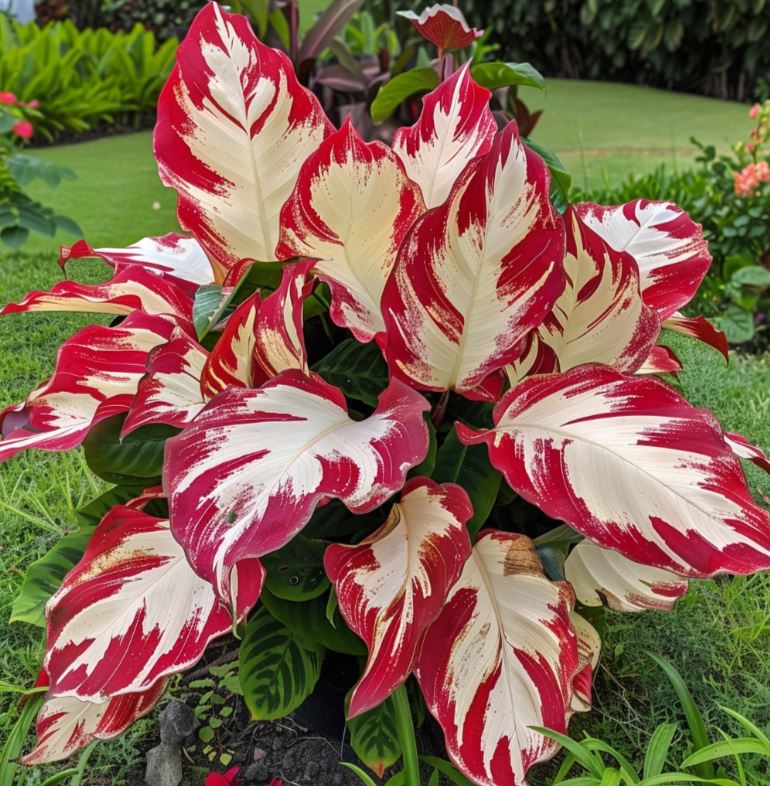
The Enchanting Calathea Medallion
The Calathea medallion, with its intricate patterns reminiscent of intricate artwork, is a plant that captivates the senses. Imagine a canvas of deep green leaves adorned with mesmerizing brushstrokes of burgundy, cream, and olive tones. Each leaf is a unique masterpiece, inviting closer inspection and a deeper appreciation for the nuances of natural beauty.
Beyond its visual allure, the Calathea medallion is a plant that thrives in humid, indirect light conditions. Its delicate nature requires a careful balance of watering, with the soil remaining consistently moist but never waterlogged. This delicate dance of care is a testament to the plant’s need for a nurturing environment, mirroring the tropical understory it calls home.
As you tend to your Calathea medallion, you may find yourself drawn into a meditative rhythm, studying the leaf patterns and observing the plant’s subtle movements. This connection, forged through attentive care, can deepen your appreciation for the intricate workings of the natural world and your role as a steward in cultivating a harmonious relationship with these enchanting beings.
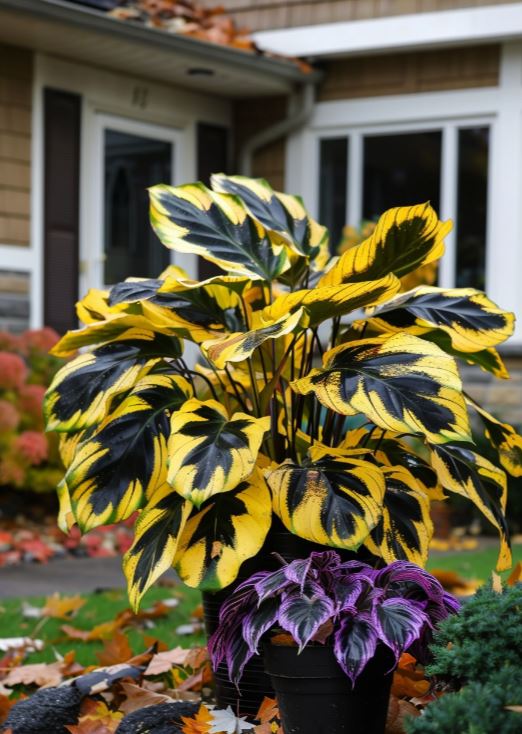
Essential Care Tips for Your Calathea
Caring for Calathea can feel like practicing a delicate dance, one that requires both awareness and intuition. Light, for instance, is paramount; too much direct sunlight may scorch their leaves, whereas too little can lead to fading pigmentation. Ideally, Calathea thrive in bright, indirect light—think of the dappled sunlight filtering through a rainforest canopy. Watering presents another layer of complexity; these plants do not take well to being underwatered or overwatered. Their soil should remain consistently moist yet not soggy—a careful balance as precarious as a tightrope walker on a wire, demanding precision and patience in approach.
The Delicate Dance of Lighting
Calathea plants are true connoisseurs of light, with each variety having its own unique preferences. The Calathea orbifolia, for instance, thrives in bright, indirect light, where its broad leaves can soak up the sun’s rays without being scorched by direct exposure. Conversely, the Calathea medallion prefers a slightly more shaded environment, with dappled light filtering through a nearby window or under the canopy of larger plants.
To create the perfect lighting conditions for your Calathea, consider the orientation of your space and the natural light patterns throughout the day. Avoid placing your plants in direct sunlight, as this can lead to discoloration, leaf curling, and even burning. Instead, seek out spots where the light is softened, such as near a north-facing window or a few feet away from an east- or west-facing window.
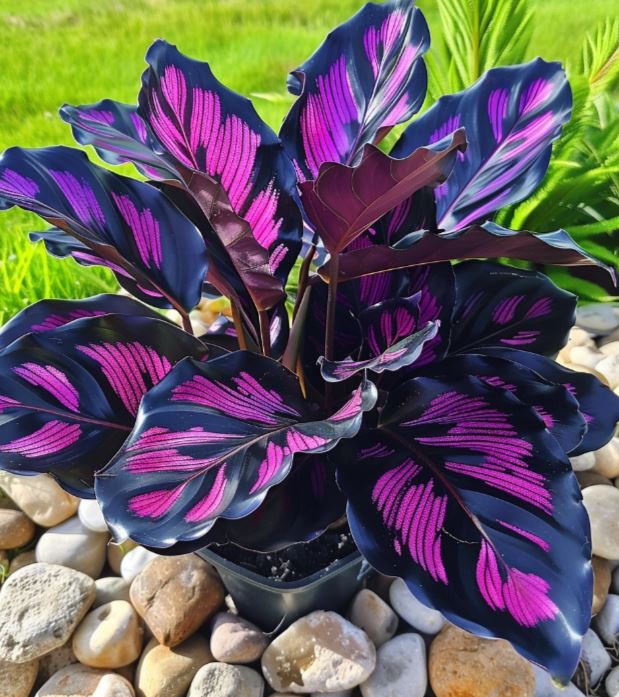
If you find that your Calathea is struggling with the available light, don’t hesitate to experiment with supplemental lighting. A well-positioned LED grow light can work wonders, providing the necessary wavelengths to keep your plant thriving. Remember, it’s all about finding that sweet spot where your Calathea can bask in the perfect balance of illumination.
The Delicate Dance of Watering
Watering Calathea plants is a dance of precision, where the slightest misstep can lead to dire consequences. These tropical beauties are notoriously sensitive to both underwatering and overwatering, making it crucial to understand their unique hydration needs.
The key is to keep the soil consistently moist, but never waterlogged. This means checking the soil regularly and adjusting your watering schedule accordingly. During the growing season, when the plant is actively putting out new growth, you may need to water more frequently, perhaps every few days. However, in the cooler, drier months, you’ll want to scale back, allowing the soil to partially dry out between waterings.
To ensure you’re not overdoing it, pay close attention to the leaves. If they start to droop or curl, it’s a sign that the plant is thirsty and needs a drink. Conversely, if the leaves develop yellow or brown spots, or if the soil stays perpetually soggy, you may be overwatering. Adjust your routine accordingly, always erring on the side of caution.
Remember, Calathea thrive in humid environments, so consider misting the leaves or placing the plant on a pebble tray to increase the moisture in the air around it. This can make a significant difference in the plant’s overall health and appearance.
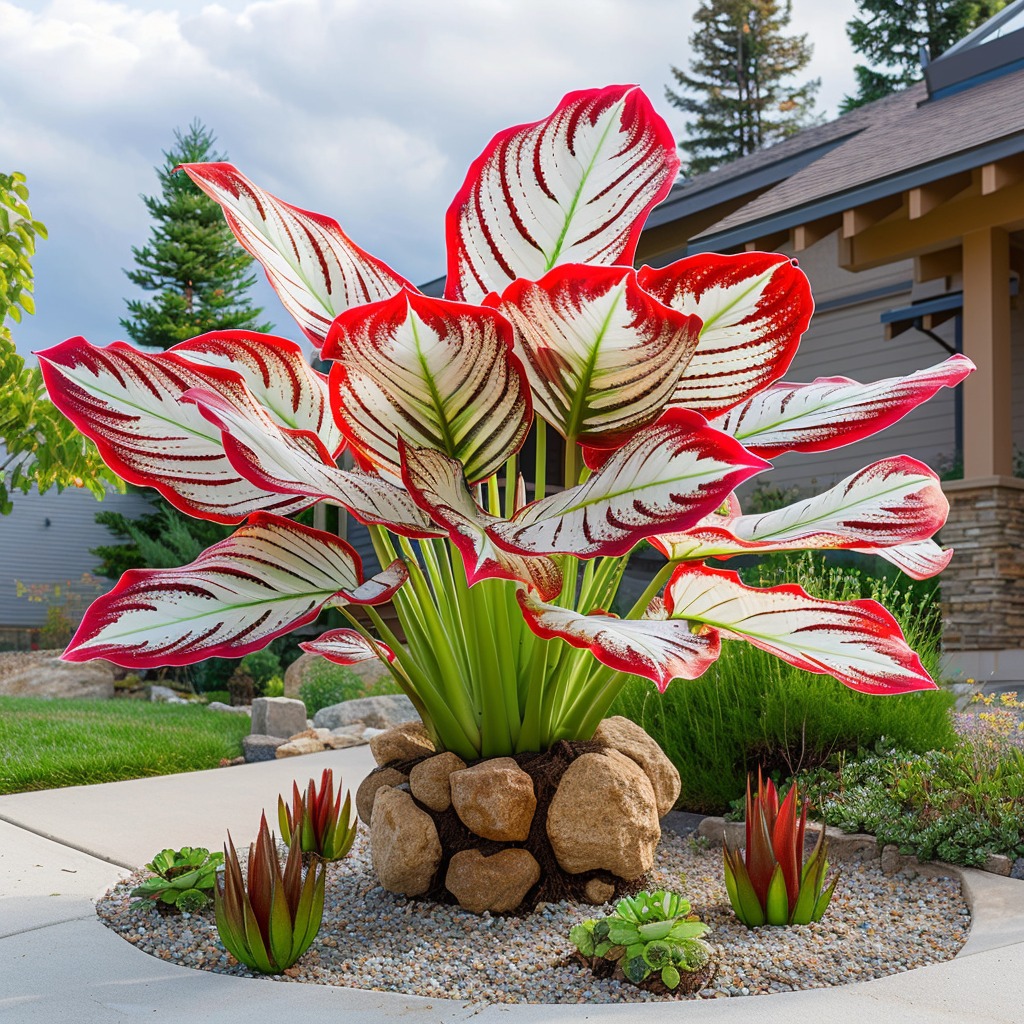
Common Issues and Simple Fixes
Despite their beauty, Calatheas occasionally encounter challenges that can threaten their vibrancy. Pests such as spider mites and aphids might target these sensitive specimens, eager to feast on their juicy leaves. Recognizing the early signs of distress can be transformative. Regular inspections can serve as proactive maintenance, akin to how great detectives scrutinize clues before they unravel a mystery. Moreover, environmental conditions must match their tropical roots; fluctuating temperatures or dry air can spell trouble. To ease this burden, consider placing your Calathea near a humidifier or clustering several plants together, enabling them to create a microclimate filled with necessary humidity—almost like a symbiotic support group.
Pests: Detecting and Defeating
Calathea plants, with their lush, tender foliage, can unfortunately become a tempting target for various pests. The most common culprits are spider mites and aphids, both of which can wreak havoc on these delicate plants if left unchecked.
Spider mites, with their tiny, web-spinning forms, can quickly establish colonies on the undersides of Calathea leaves, sucking the life out of the plant and causing discoloration, mottling, and even leaf drop. To spot these diminutive pests, carefully inspect your plant, paying close attention to the leaf undersides and the junctions between the leaf and stem.
Aphids, on the other hand, are small, soft-bodied insects that cluster on the new growth and tender leaves of Calatheas. These sap-sucking insects can stunt the plant’s development and even transmit viral diseases if left to proliferate.
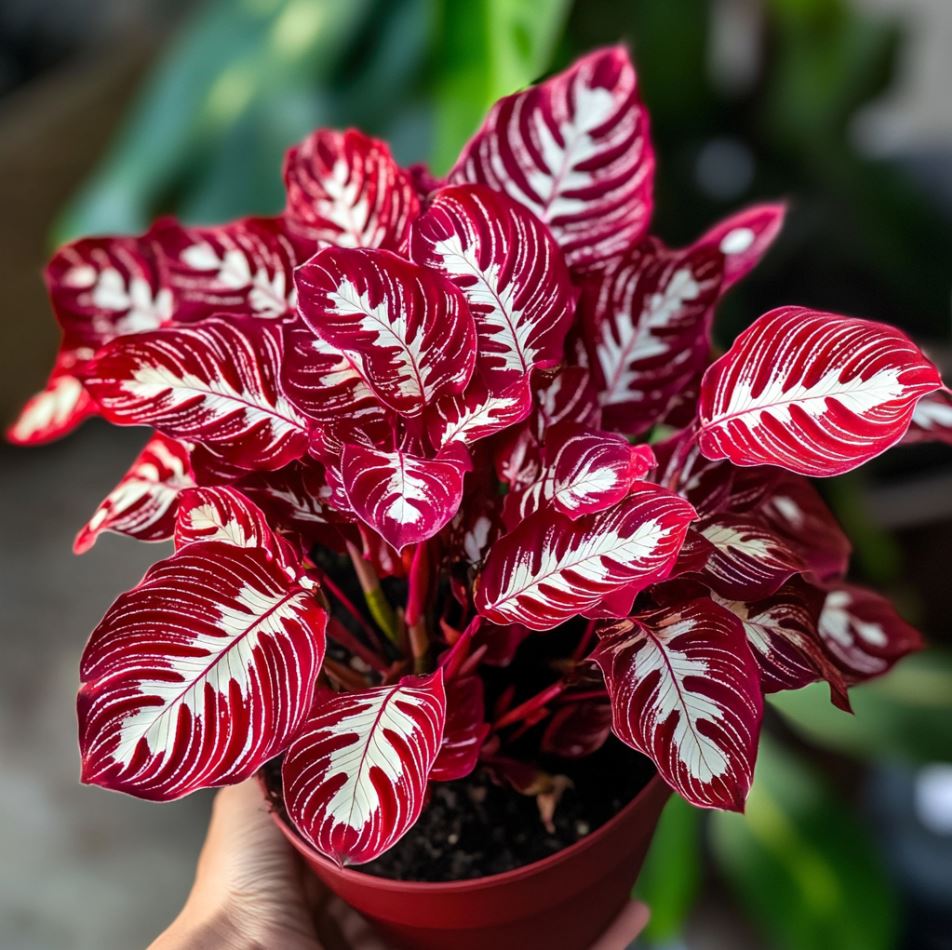
The key to combating these pests is early detection and swift action. Regularly inspecting your Calathea, particularly the undersides of the leaves, can help you catch any infestations in their earliest stages. At the first sign of trouble, consider using a gentle, eco-friendly insecticidal soap or neem oil solution to target and eliminate the pests without harming your beloved plant.
Remember, prevention is often the best medicine. Maintaining optimal growing conditions, such as proper humidity levels and air circulation, can make your Calathea less susceptible to pest infestations in the first place.
Environmental Woes: Humidity and Temperature
Calathea plants, with their tropical origins, thrive in specific environmental conditions that can be challenging to replicate in many indoor settings. Fluctuating temperatures and low humidity levels can quickly take a toll on these delicate specimens, leading to a host of issues.
Low humidity, in particular, can be a significant problem for Calatheas. These plants are accustomed to the lush, moisture-rich atmosphere of their native rainforests, and they struggle when the air around them becomes too dry. This can result in crispy leaf edges, browning tips, and a general lack of vigor.
To combat this, consider placing your Calathea near a humidifier, or group several Calathea plants together to create a microclimate of increased humidity. You can also mist the leaves regularly, ensuring that the plant’s transpirational needs are met.
Temperature fluctuations can also be a source of stress for Calatheas. These plants prefer a stable, moderate temperature range, typically between 65°F and 85°F (18°C and 29°C). Sudden drops or spikes in temperature can cause the leaves to curl, wilt, or even turn yellow and fall off.
To maintain the ideal temperature, avoid placing your Calathea near drafty windows, air vents, or other sources of sudden temperature changes. If your home experiences significant temperature swings, consider moving your plant to a more consistent environment, such as a room with stable heating and cooling.
By addressing both humidity and temperature concerns, you can create a thriving, resilient Calathea that will reward you with its stunning foliage and captivating presence.
Propagation: Sharing the Beauty of Calathea
Propagation allows green thumbs to luxuriate in their passion while sharing it with friends and family. Properly propagating Calathea isn’t just a gardening task; it transforms the act into artistry. By using division methods during repotting, plant aficionados can give new life to these botanical beauties. Each rooted division serves as a testament to the commitment shared between gardener and plant. Imagine giving a pot of propagated Calathea to a friend, backed by enthusiasm about their care; it becomes more than a gift—it is an invitation to foster their own flourishing relationship with nature.
The Art of Division
Propagating Calathea plants through division is a delicate dance, where the gardener’s skill and the plant’s resilience come together in a harmonious exchange. This method, typically undertaken during repotting, allows you to not only rejuvenate your existing Calathea but also share its beauty with others.
The key to successful Calathea propagation lies in identifying healthy, vigorous offsets or divisions that can be separated from the main plant. Look for sections with their own established root systems, ensuring that each division has the necessary foundation to thrive independently.
Gently lift the plant from its pot, taking care to disturb the roots as little as possible. With a clean, sharp knife or pruning shears, carefully divide the root ball, making sure each division has a sufficient number of roots and leaves. Handle the divisions with care, avoiding any unnecessary stress or damage.
Once divided, plant the new sections in well-draining, nutrient-rich soil, watering them thoroughly. The key is to provide the right conditions for the divisions to establish themselves, with consistent moisture, indirect light, and a stable, humid environment.
As the new Calathea plants take root and begin to flourish, you’ll witness the magic of propagation unfold. Each vibrant leaf and thriving division becomes a testament to your nurturing touch and a tangible connection to the natural world you’re sharing with others.
Sharing the Calathea Love
Gifting a propagated Calathea plant is more than just a simple exchange of greenery; it’s an invitation to foster a cherished relationship with nature. When you present a friend or loved one with a thriving Calathea division, you’re not just handing over a plant – you’re sharing a piece of your own passion and expertise.
The act of propagation imbues each Calathea division with a sense of personal care and attention. By guiding your recipient through the plant’s unique needs and requirements, you’re empowering them to become a caretaker themselves, cultivating a deeper appreciation for the living, breathing entity they now hold in their hands.
As your friend or family member nurtures their new Calathea, they’ll be on a journey of discovery, learning the delicate dance of light, water, and humidity that these plants require. And with each new leaf that unfurls, they’ll be reminded of the connection they’ve forged – not just with the plant, but with the larger story of your shared experience.
Gifting a propagated Calathea is a gesture that transcends the physical plant itself. It’s a testament to the power of nature to bring people together, to foster a sense of wonder and stewardship, and to create a lasting bond that extends far beyond the confines of a single home or garden.
The Emotional Connection: Why We Love Calathea
Beyond their horticultural allure, Calatheas evoke emotional responses that push us deeper into the human-nature bond. They offer a calming presence akin to childhood nostalgia wrapped in greenery—a reminder of sun-drenched afternoons spent among trees whispering secrets. In times fraught with anxiety and digital overstimulation, tending to Calathea serves as a grounding ritual. Each leaf brushed against is an antidote to disconnection, anchoring us back to the core of life itself. Every water droplet delivered is a gesture of care, manifesting our innate desire to nurture and connect.
The Calming Embrace of Calathea
Calathea plants possess a unique ability to evoke a sense of tranquility and nostalgia, transporting us back to simpler times when our connection to the natural world was more visceral and profound. These tropical wonders, with their graceful movements and soothing color palettes, have a way of creating a serene, almost meditative atmosphere in any space they inhabit.
As we tend to our Calathea plants, gently caressing their leaves and observing their subtle daily rhythms, we’re drawn into a deeper state of presence and mindfulness. The act of caring for these living entities mirrors the nurturing instincts we cultivated as children, when the world was a vast playground filled with wonder and discovery.
Imagine a Calathea orbifolia, its broad, silvery-green leaves gently undulating in the soft, dappled light. The rhythmic unfolding and folding of the leaves, like a living meditation, can have a profoundly calming effect on the senses. It’s as if these plants are offering us a respite from the cacophony of modern life, inviting us to slow down, breathe deeply, and reconnect with the fundamental rhythms of nature.
In times of stress and overwhelm, the mere presence of a thriving Calathea can serve as a grounding anchor, reminding us of the enduring beauty and resilience of the natural world. By immersing ourselves in their care, we’re not just nurturing a plant – we’re nurturing our own sense of inner peace and well-being, forging a deeper bond with the living entities that share our space.
The Antidote to Disconnection
In a world increasingly dominated by digital distractions and a sense of disconnect from the natural world, Calathea plants offer a powerful antidote. These living, breathing entities have the remarkable ability to ground us in the present moment, reminding us of our innate connection to the rhythms of life.
As we tenderly water our Calathea, tracing the contours of its leaves with our fingers, we’re engaging in a profoundly human act of care and nurturing. Each droplet of water delivered is a tangible expression of our desire to support and nourish these delicate beings, an act that resonates on a deep, primal level.
Moreover, the gentle, almost choreographed dance of the Calathea leaves, which rise and fall with the natural light, further enriches our experience. It prompts us to be aware of the changing world around us and the rhythm of our own lives. When we’re so often caught in the whirlwind of modernity, the simple act of observing a plant’s daily journey can serve as a reminder to slow down and appreciate life’s nuances.
Establishing this connection goes far beyond the transactional nature of many relationships we navigate daily. Caring for a Calathea creates a dialogue — one filled with patience, anticipation, and eventual rewards. As the new leaves shoot up, they symbolize growth, resilience, and the nurturing bond we’ve fostered. This exchange between plant and caregiver urges introspection, making us reflect on our own lives and connections.
In this way, the Calathea becomes an emblem of connectivity. It invites us to not only engage with the entity before us but also to foster connections with those around us. Sharing our newfound knowledge or propagating a Calathea to give to a friend deepens these bonds, creating a ripple effect of care that encourages stronger ties in our personal and communal lives.
The Symbol of Resilience
Calatheas, inherent survivors in their tropical habitats, offer lessons of resilience that resonate deeply with human experiences as well. Their ability to thrive in diverse conditions serves as a metaphor for our capacity to adapt and overcome challenges, inspiring us to embrace change and seek solace even during turbulent times.
Think about the myriad environments from which Calatheas originate — from humid rainforests to slightly drier edges. Each variety has its unique quirks and needs, teaching us about flexibility and the importance of understanding intricacies in our surroundings.
When faced with obstacles, whether emotional or situational, we often find ourselves grappling like a plant struggling for sustenance amidst rocky roots. Our ability to shift perspective, seek sunlight, and find water amidst despair mirrors the resilience these plants embody. Just as Calatheas may droop under neglect yet spring back to life with care, we too possess the strength to rise again, flourishing even when circumstances seem dire.
Witnessing this growth firsthand fosters a deeper admiration for both nature and ourselves. Every time you nurture a Calathea back to health, you cultivate a piece of your own perseverance, turning moments of adversity into stories of triumph. These reflections remind us that we are capable of overcoming our own struggles, urging us to channel our energies toward nurturing both ourselves and the relationships we hold dear.
The Aesthetic Allure of Calathea
Visually stunning, Calathea plants captivate with their vibrant patterns, vivid colors, and striking leaf shapes. Their aesthetic versatility allows them to seamlessly blend into various décors, enriching spaces and evoking emotions through design. Calatheas become living artworks, inviting us to consider how they impact our environment and interactions within it.
Nature’s Artistry in Motion
The enchanting patterns of Calathea leaves are true masterpieces of nature’s artistry. From the dramatic stripes of the Medallion to the intricate patches of the Rattlesnake, each variety boasts its unique charm and individuality. These patterns tell stories; they represent adaptation, survival, and the beauty inherent in diversity.
When we bring a Calathea into our homes, we’re not merely adding a touch of green; we’re introducing an element of expression and joy that can transform our living space. Imagine the delight of waking up to the mottled hues of a Calathea ornata as sunlight streams through your window, casting playful shadows that dance across the room. This interactive relationship with a living entity makes interiors vibrant, alive, and ever-changing.
Moreover, the leaf movements throughout the day intensify the notion of nature’s performance art. The gentle unfolding and folding of the leaves create a dynamic visual display that shifts in response to light, echoing a heartbeat. It compels us to interact; people might find themselves drawn to adjust the position of the plant or explore different lighting options. This process of exploration connects our desires for both beauty and functionality.
Finding Harmony in Space
Incorporating Calathea plants into interior design extends beyond mere aesthetics; it allows us to engage with biophilic principles. By embracing nature within our environments, we can experience improved mood and cognitive functions, fostering a sense of tranquility and creativity.
The lush foliage and colors of Calathea can complement virtually any design scheme, providing a soft balance against more angular furniture or stark walls. Their foliage adds organic texture that can soften spaces while profoundly influencing the atmosphere, encouraging relaxation and contemplation. A room enriched with greenery has the potential to transform mundane routines into peaceful rituals, inviting occupants to pause and breathe.
Consider how a single Calathea strategically placed next to a reading nook can turn an ordinary corner into a sanctuary, where occasional retreats help restore mental clarity and encourage leisure. Observing the plant’s daily behaviors reminds us to take time for ourselves — nurturing the interaction between human and element, exploring the importance of mental wellness in a fast-paced era through slow, intentional engagement.
Crafting Lasting Impressions
Sharing the beauty of a Calathea extends beyond personal enjoyment; gifting these stunning plants transforms them into ambassadors of thoughtful connection. Gifting isn’t just about the physical act of giving; it’s a gesture steeped in meaningful intentions.
When presenting a Calathea to someone special, it symbolizes an acknowledgment of their worth and your desire to share moments of beauty and healing. Each recipient isn’t merely receiving a plant but a living embodiment of thoughtfulness and narratives woven together through shared experiences.
Through conversations about care instructions, growth, and evolution, the bond deepens. Discussing how they can personalize their Calathea experience fosters engagement, while invitations to share growing stories lead to continued connections over time. A propagated Calathea nurtures relationships beyond its plant form, bringing depth to interactions marked by empathy, love, and mutual appreciation for nature and each other.
Conclusion
Embracing Calathea plants encompasses more than gardening aesthetics or cultivating fresh greenery. It’s an invitation to forge a profoundly emotional relationship with nature, to uncover grounding rituals, and to embrace resilience and connection in our ever-evolving lives. The transformative power of each plant extends far beyond its stunning beauty, becoming a grounding anchor that richly enhances our experiences—both personally and relationally. Whether through propagation, caretaking, or sharing, Calatheas inspire us to prioritize our connection to nature as fundamental nourishment for our souls and our communities, reminding us that in nurturing, we find our own growth. Back Viết tiếpNext
